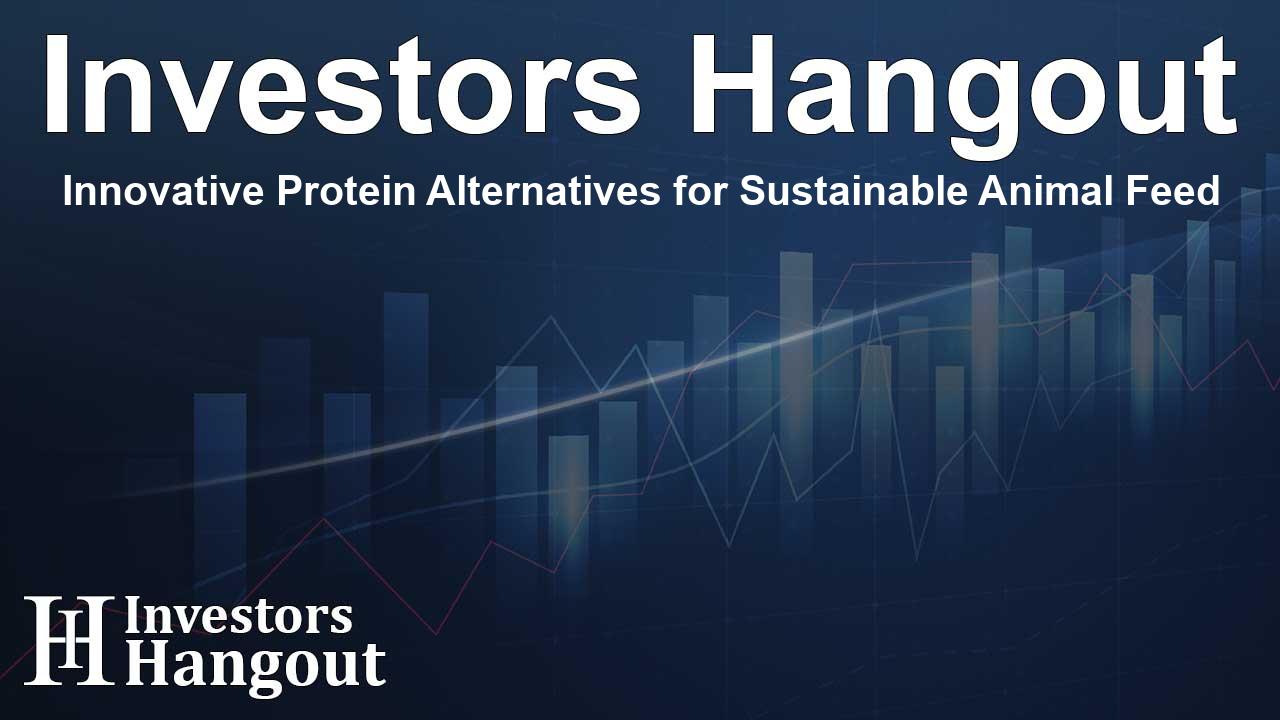Innovative Protein Alternatives for Sustainable Animal Feed

Innovative Protein Alternatives for Sustainable Animal Feed
According to recent research, sales of animal feed alternatives protein are projected to achieve a market value of USD 388.5 billion in the future, with robust growth anticipated at a compound annual growth rate (CAGR) of 8.0% over the next decade. This surge is largely attributed to the rising awareness of the environmental impacts associated with conventional livestock farming practices, prompting consumers to favor more sustainable and ethical options in their animal feed selections.
Shifting Consumer Preferences
As the ecological consequences of animal farming become more apparent, consumers increasingly prioritize transparency and sustainability. The movement towards animal products derived from livestock that are fed on alternative and eco-friendly feeds reflects this shift. This change is leading to a growing preference for brands that showcase adherence to ethical farming practices. There is notable interest in alternative feeds that utilize innovative protein sources, such as insects and algae, along with plant-based proteins. Companies that embrace these values are establishing a competitive advantage in the market.
Industry Examples
For instance, companies like Protix, which focuses on producing insect-based protein for animal feed, have resonated with environmentally conscious consumers, fostering a shift that impacts the entire supply chain of alternative animal feed.
Challenges in Production
The implementation of effective processing methods is critical for success in producing alternative proteins, as these unique ingredients demand specialized equipment and methods. For example, processing insect-based proteins or algae requires unique machinery that accommodates their distinct characteristics. This may entail significant capital investment for feed manufacturers. Furthermore, scaling up production in response to increasing demand poses logistical and technical challenges, especially in maintaining high-quality standards while optimizing processes.
Key Market Insights
The animal feed alternative protein market is predicted to reach nearly USD 180 billion by the mid-2020s, with North America expected to capture around 20.4% of the market share in this space. The anticipated growth rate for alternative proteins in feed is projected to persist at a CAGR of 8.0% from 2024 through 2034.
Market Trends
Several influential trends are shaping the industry, including:
- Sustainability and environmental impact concerns
- Advancements in biotechnology
- Consumer demand for ethical food sources
- Focus on nutritional quality and performance in feed formulations
Leading industry players such as Cargill, ADM, Evonik, and Wilmar are navigating these market dynamics through innovation and strategic partnerships, aiming to steer alternative proteins toward becoming a mainstream solution in animal nutrition.
Competitive Landscape
The competitive landscape of the animal feed alternative protein market is robust, characterized by key players who are committed to high-quality, sustainable product offerings. Cargill stands out with its global reach and extensive portfolio while maintaining a focus on sustainability and innovation. ADM benefits from an integrated value chain, enhancing its production efficiency and product quality. Evonik positions itself with specialty chemicals and additives that optimize animal health, while Wilmar leverages its diverse agricultural operations to incorporate alternative proteins effectively.
Future Market Outlook
Future Market Insights provides a thorough analysis of the growing animal feed protein alternatives market. The research captures historical demand data and forecasts trends from 2024 to 2034, focusing on various feed types, and livestock categories, and regional insights. This comprehensive data will assist stakeholders in understanding market opportunities and challenges better.
Frequently Asked Questions
What drives the growth of alternative proteins in animal feed?
The growth is primarily driven by sustainability concerns among consumers, along with the increasing awareness of the environmental impacts of traditional livestock farming.
What are the most popular sources of alternative proteins?
Insects, algae, and various plant-based proteins are among the most popular sources because they provide sustainable and efficient protein options for animal feed.
How do companies benefit from adopting sustainable practices?
Companies adopting sustainable practices often gain a competitive edge by attracting environmentally conscious consumers and enhancing brand loyalty.
What challenges do manufacturers face in producing alternative proteins?
Manufacturers face challenges related to the need for specialized processing equipment, scaling production while maintaining quality, and the logistical complexities of supply chain management.
What is the expected market size for alternative proteins in animal feed by 2034?
The market for animal feed alternative proteins is expected to reach approximately USD 388.5 billion by 2034, indicating robust future growth.
About Investors Hangout
Investors Hangout is a leading online stock forum for financial discussion and learning, offering a wide range of free tools and resources. It draws in traders of all levels, who exchange market knowledge, investigate trading tactics, and keep an eye on industry developments in real time. Featuring financial articles, stock message boards, quotes, charts, company profiles, and live news updates. Through cooperative learning and a wealth of informational resources, it helps users from novices creating their first portfolios to experts honing their techniques. Join Investors Hangout today: https://investorshangout.com/
Disclaimer: The content of this article is solely for general informational purposes only; it does not represent legal, financial, or investment advice. Investors Hangout does not offer financial advice; the author is not a licensed financial advisor. Consult a qualified advisor before making any financial or investment decisions based on this article. The author's interpretation of publicly available data shapes the opinions presented here; as a result, they should not be taken as advice to purchase, sell, or hold any securities mentioned or any other investments. The author does not guarantee the accuracy, completeness, or timeliness of any material, providing it "as is." Information and market conditions may change; past performance is not indicative of future outcomes. If any of the material offered here is inaccurate, please contact us for corrections.